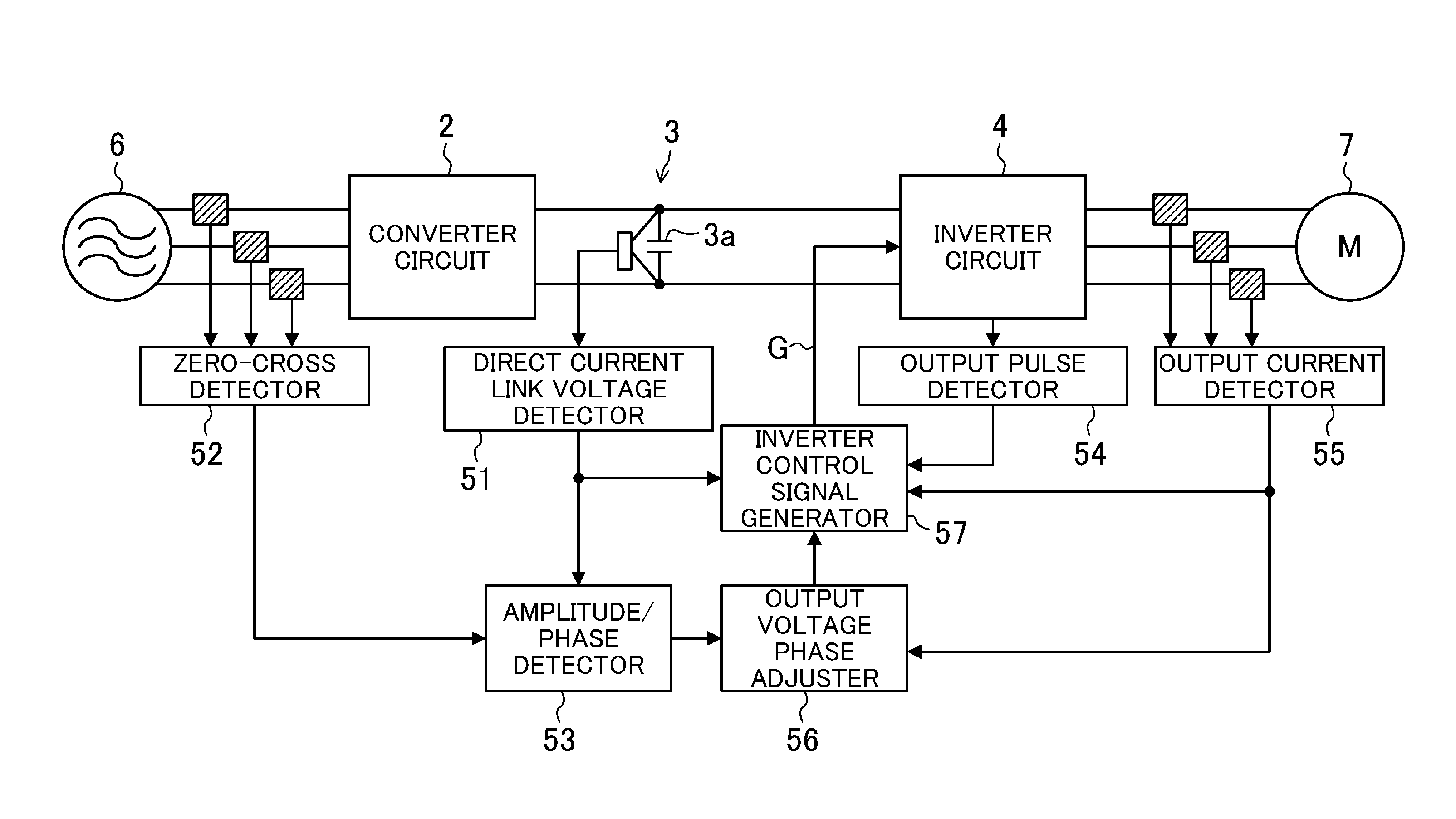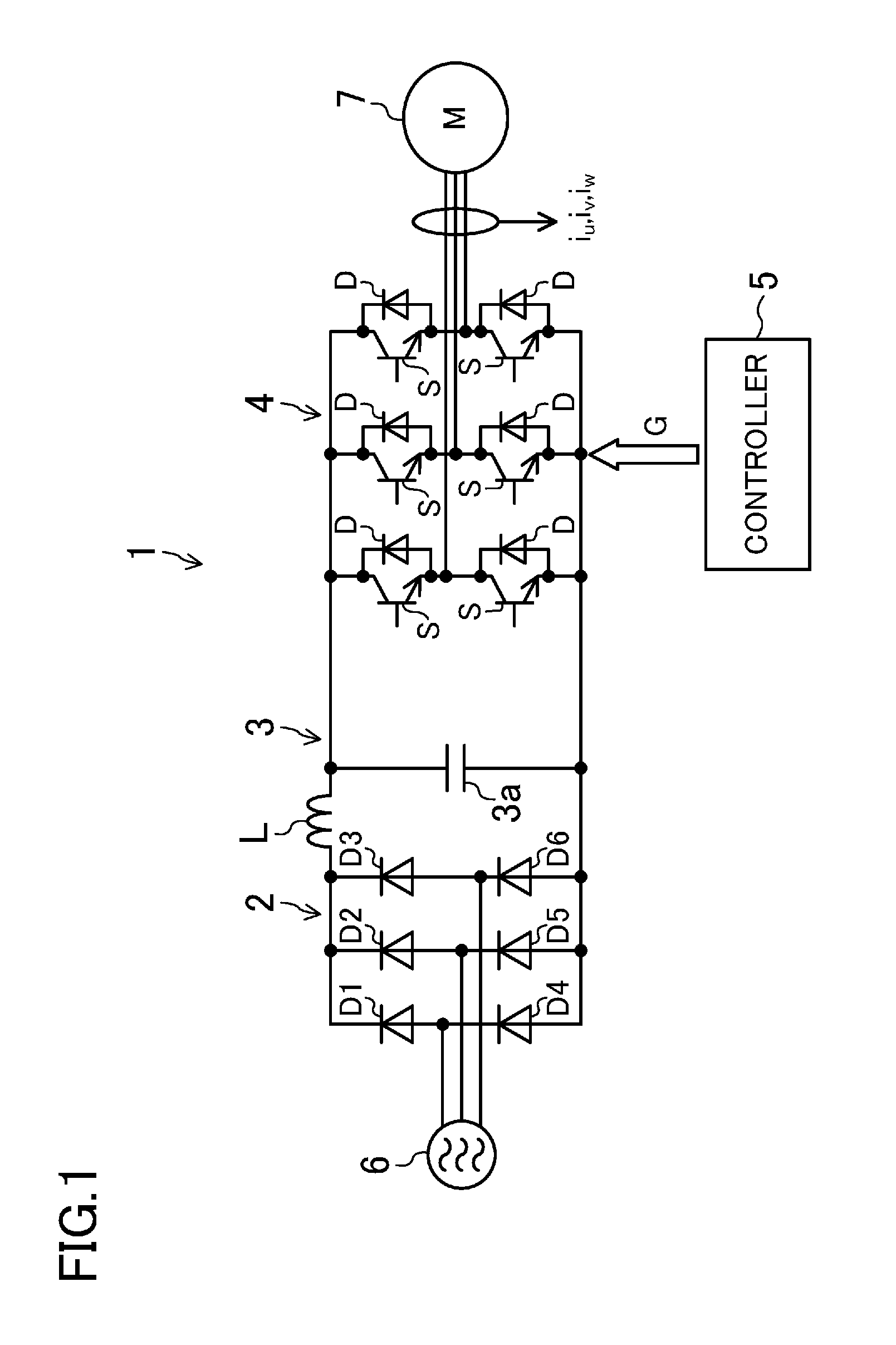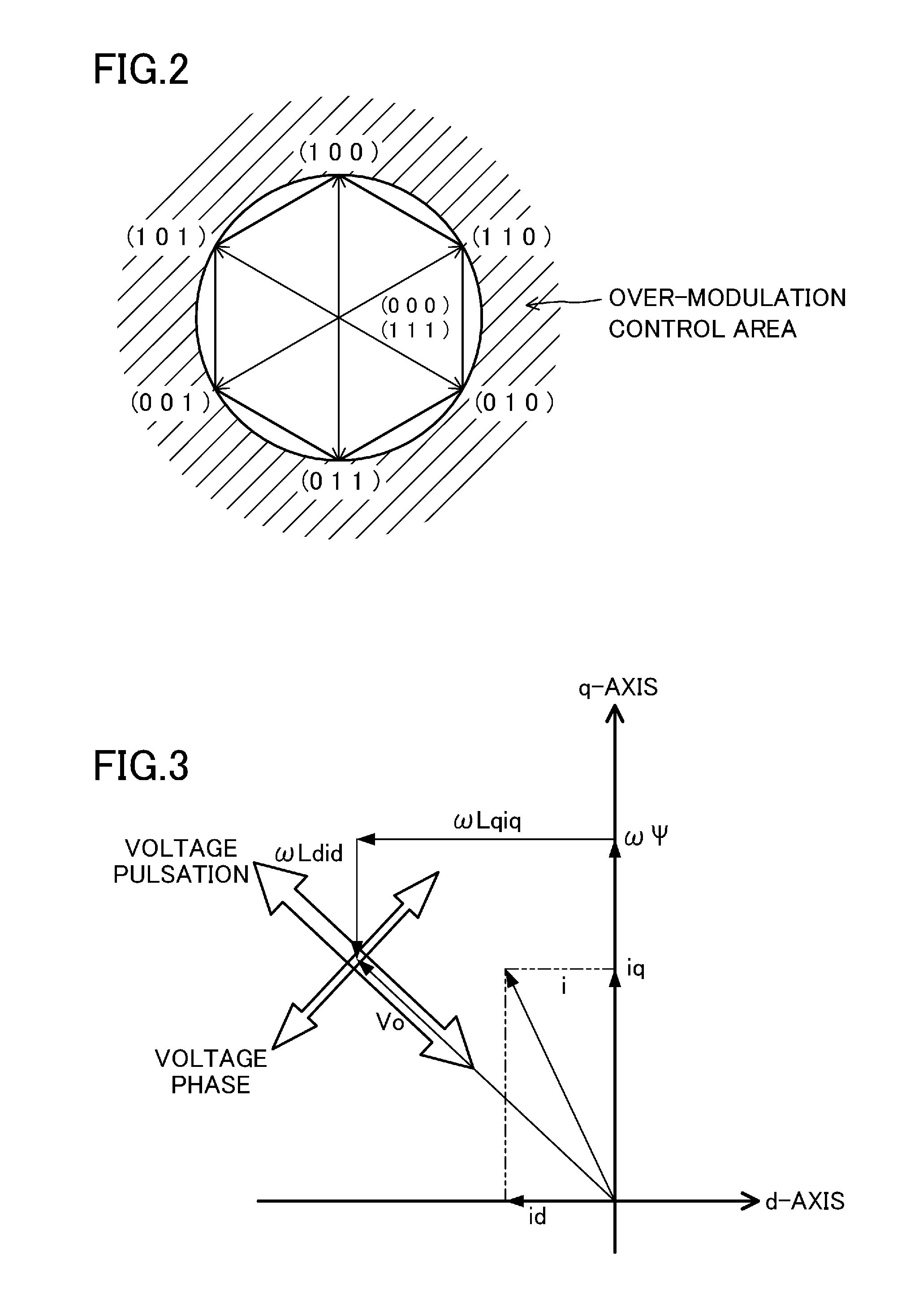Power converter
a power converter and converter technology, applied in the direction of motor/generator/converter stopper, dynamo-electric converter control, dynamo-electric gear control, etc., can solve the problems of increasing the loss of devices in the three-phase electrolytic capacitor-less inverter, the rate of voltage utilization is reduced, and the device loss is reduced. , the effect of effective realization
- Summary
- Abstract
- Description
- Claims
- Application Information
AI Technical Summary
Benefits of technology
Problems solved by technology
Method used
Image
Examples
first embodiment
of the Invention
[0040]
[0041]FIG. 1 is a block diagram illustrating the configuration of a power converter (1) of a first embodiment of the present disclosure. Referring to FIG. 1, the power converter (1) includes a converter circuit (2), a direct current link (3), an inverter circuit (4), and a controller (5). The power converter (1) is configured to convert an alternating current power supplied from a three-phase alternating current power supply (6) to a power having a predetermined frequency to supply the converted power to a motor (7). Note that the motor (7) of the present embodiment is a permanent magnet synchronous motor. More specifically, the motor (7) of the present embodiment is an interior permanent magnet motor (hereinafter sometimes referred to as an “IPM motor”). The motor (7) is configured to drive, e.g., a compressor provided in a refrigerant circuit of an air conditioner.
[0042]2)>
[0043]The converter circuit (2) is connected to the three-phase alternating current pow...
second embodiment
of the Invention
[0085]A power converter (1) of a second embodiment controls a voltage phase using the output torque of a motor (7) as a reference, instead of using an output current as the reference.
[0086]The output torque of the motor (7) can be obtained by a cross product of a current vector (i) and an armature interlinkage magnetic flux vector. Specifically, the output torque can be represented by the following expression.
i·Ψ·sin φ [Second Expression]
i: MAGNITUDE OF CURRENT VECTOR
Ψ: MAGNITUDE OF INTERLINKAGE MAGNETIC FLUX VECTOR
φ: ANGLE BETWEEN BOTH VECTORS
[0087]The power converter (1) of the present embodiment controls the voltage phase using the output torque of the motor (7) as the reference, instead of using the output current as the reference. The motor output torque is determined depending on a motor voltage, a motor current, and a motor rotational speed. Thus, if the voltage phase is controlled, the torque can be controlled. Specifically, the torque can be controlled in s...
third embodiment
of the Invention
[0089]A power converter (1) of a third embodiment controls a voltage phase using the output power factor of an inverter circuit (4) as a reference, instead of using an output current as the reference. The output power factor is determined depending on a relationship between the phase of a resultant voltage vector (V0) and the phase of a current vector (i). Thus, if the voltage phase is controlled, the output power factor can be controlled. Specifically, the output power factor can be controlled in such a manner that feedback control is performed in the output voltage phase adjuster (56) to change the voltage phase.
[0090]Improvement of the output power factor reduces the size of the inverter circuit (4) and the size of a motor (7).
PUM
 Login to View More
Login to View More Abstract
Description
Claims
Application Information
 Login to View More
Login to View More - R&D
- Intellectual Property
- Life Sciences
- Materials
- Tech Scout
- Unparalleled Data Quality
- Higher Quality Content
- 60% Fewer Hallucinations
Browse by: Latest US Patents, China's latest patents, Technical Efficacy Thesaurus, Application Domain, Technology Topic, Popular Technical Reports.
© 2025 PatSnap. All rights reserved.Legal|Privacy policy|Modern Slavery Act Transparency Statement|Sitemap|About US| Contact US: help@patsnap.com



